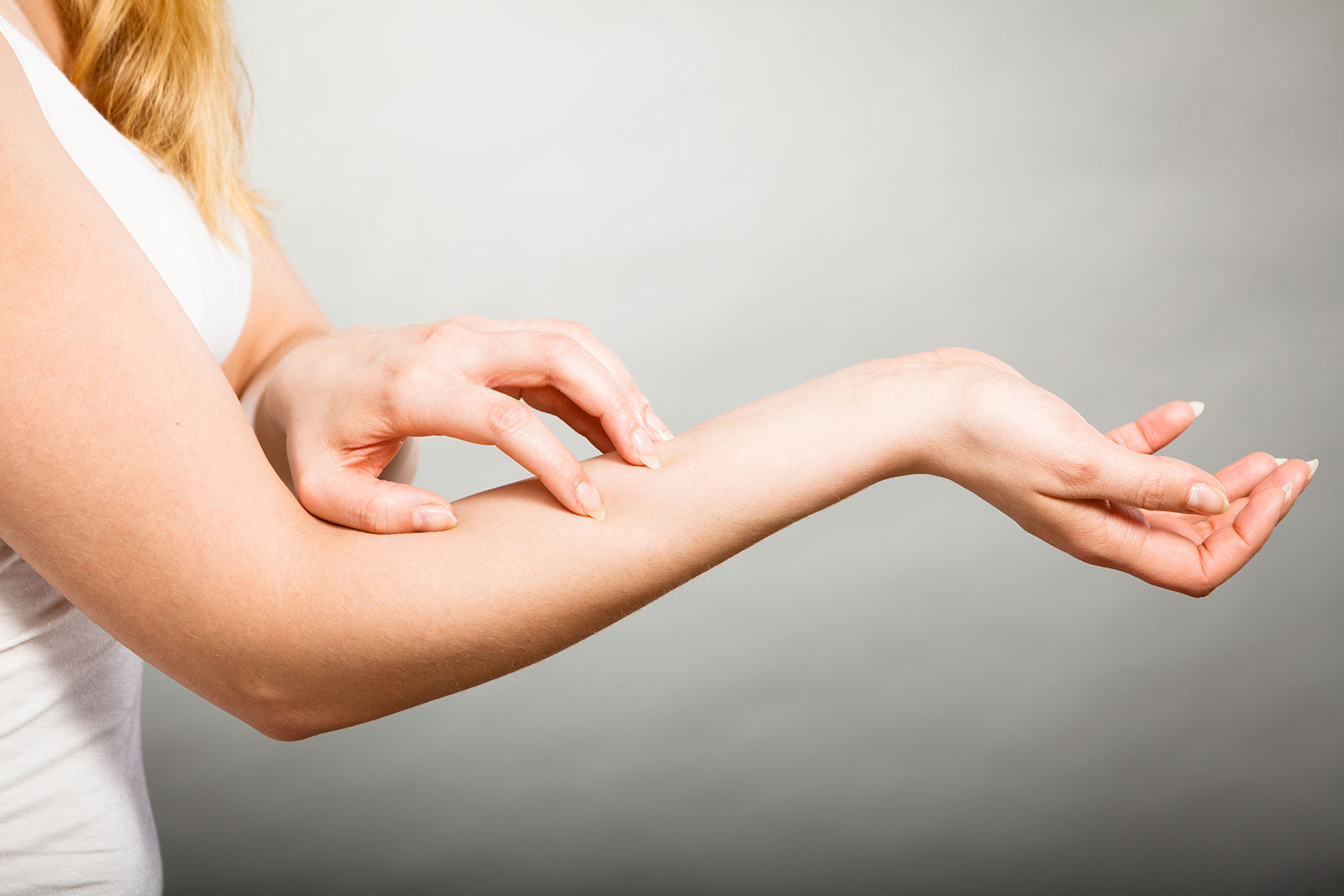Dry skin (also called xerosis) is a very common, benign condition of the skin. There can be many different causes for dry skin including internal or genetic causes and external or environmental factors. Several of the environment factors that can cause dry skin include normal aging, dry climates, or excessive exposure to water. Excess water exposure can occur during household work or different occupational exposures that may require you to immerse your hands in water frequently. Healthcare workers, cleaners, and hair stylists may be at increased risk of excess water exposure.
Some of the symptoms of dry skin include rough or flaky skin, cracking skin, red or irritated appearing skin, or itchy skin. Usually dry skin can be managed by over the counter moisturizers. Other treatments that can help include limiting the hot water used in your shower or bath and shortening the time of your bathing. Applying moisturizer immediately after bathing is the best time to hydrate your skin. Avoiding soaps with fragrance and dyes can also help.
Usually dry skin can be managed at home; however, occasionally dry skin can progress to inflammation of the skin (dermatitis). This is a scenario that you may want to visit your dermatologist so you can review ways and discuss treatments that can help improve your symptoms.
FAQs:
Who gets dry skin?
Anyone can get dry skin. In general, there are certain risk factors that can increase your chance for dry skin. These include:
- Normal aging. As we age it is normal for our skin to lose its normal hydration so we may find that we need to moisturize more often.
- Low humidity and dry climates. Usually dry skin tends to worsen during the low humidity and cold winter months.
- Jobs or hobbies that may predispose you to an increase in water exposure. Such jobs or hobbies may include cleaning, healthcare works, hair stylists, etc.
- Frequent swimming in chlorinated swimming pools
- What soaps and lotions are best for my dry skin?
You may want to visit your local dermatologist to discuss which products may be best for your skin type. Moisturizers come in many different versions including creams, lotions, and ointments so you may want to see which type is best for you. In general, for patients with dry skin we usually recommend fragrance free, dye free skin care products. Products that are listed as “hypoallergenic” or for “sensitive skin” may also be helpful. Labels to look for:
- Fragrance free
- Dye free
- Hypoallergenic
- Sensitive skin
- Free and clear
- Unscented
- Eczema cream
How do I prevent dry skin?
- Moisturize frequently, especially directly after bathing
- Limit your water exposure. Decrease your bathing time and limit the amount of hot water used. Very hot water can be drying for your skin. Pat dry after bathing.
- Protect your skin during cold or windy temperatures. This includes covering your skin with appropriate winter gear (hat, gloves, scarf, etc) when outside during very dry, cold, or windy climates.
- Wear latex free rubber gloves when doing excessive water work such as dishwashing
When should I see my dermatologist for my dry skin?
You can always visit your dermatologist for your dry skin as they may have additional tips and recommendations specifically for you. Occasionally dry skin becomes very severe and can progress to inflammation of the skin or dermatitis. Dermatitis that specifically occurs from dry skin is called asteatosis dermatitis. In this case you may need prescription medications such as topical steroids or non-steroid medications to help improve your symptoms.

